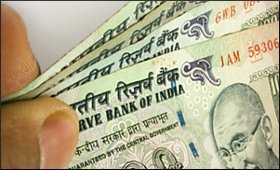|
|
|

|
Credit to large industries declines, inflow rises in services
|
|

|
|
| Top Stories |
 |
|
|
|
SME Times News Bureau | 01 Mar, 2021
As credit flow from banks improve with the acceleration in economic
activities post the gradual lifting of the lockdown restrictions, credit
growth has not been on the same lines across sectors.
As per the
the Reserve Bank of India's data, loans towards large industries
declined on the back of stressed assets in the segment, while that in
the services sector increased.
Industrial credit includes credit
to micro, small, medium and large industries, depending upon the firms'
investment in plant and machinery and their turnover.
Large
industries constituted around 82 per cent of the credit offtake to the
industrial sector, while the micro, small and medium industries together
constituted the rest in November 2020.
Credit to the industrial
sector has generally remained weak in the recent years. A peak of 6.9
per cent was achieved in April 2019 but there has been a continuous
decline in credit offtake since then, with credit growth turning
negative in October 2020, it noted.
The recent decline in credit growth was mainly due to the large industries.
"Owing
to the stressed assets in large industries, there was a general
reluctance on the part of bankers to lend to these industries, with the
problem getting compounded by the pandemic," it said.
The central
bank's bulletin, however, noted that although credit growth to large
industries turned negative in November 2020, the silver lining has been
the robust growth of credit to the medium industries.
The
services sector, on the other hand, witnessed a robust credit growth.
Unlike the sharp moderation in growth of industrial credit and personal
loans due to the pandemic, credit growth to the services sector has
bucked the downtrend and posted an accelerated growth.
"This
acceleration has been primarily due to 'transport operators' and
'trade'. Further, 'tourism, hotels and restaurants' also registered
accelerated growth notwithstanding the pandemic," said the report.
Credit
extended by both public sector banks and private sector banks to the
services sector has exhibited resilience in 2020-21 so far.
The
RBI bulletin showed that credit growth to agriculture and allied
activities accelerated in November 2020 as compared to a year ago.
Credit growth to this sector has been increasing in the recent months
with the growth in November 2020 being the highest since June 2019.
"The
increase in credit to agriculture sector, which is a part of priority
sector lending, is indicative of good performance of this sector," said
the RBI report.
|
|
|
| |
|
|
|
|
|
|
|
|
|
|
|
|
|
|
| |
| Customs Exchange Rates |
| Currency |
Import |
Export |
US Dollar
|
66.20
|
64.50 |
UK Pound
|
87.50
|
84.65 |
Euro
|
78.25
|
75.65 |
| Japanese
Yen |
58.85 |
56.85 |
| As on 13 Aug, 2022 |
|
|
| Daily Poll |
 |
 |
| PM Modi's recent US visit to redefine India-US bilateral relations |
|
|
|
|
|
| Commented Stories |
 |
|
|
|
|
|
| |
|